In the Know

There are few thingsmore unsettling than hearing a name you know you should know, but don’t. Nowhere is that more true than in the business of television, where innovation and shifting political winds pose constant challenges to those trying to keep current. Common responses to being caught off-guard—bluffing, castigating an assistant, claiming some new insight about the unknown name invented on the spot—rarely lead anywhere productive.
Instead, as this whirlwind year winds to its conclusion, start with the names on the following pages. And don’t be surprised— or cocky—if you encounter names you think you already know. Even the familiar ones need to be reassessed. Executives switch teams. Laggards become leaders. Technologies initially seen as one kind of disruption wind up having other effects.
Besides, it’s always good to brush up. And may we suggest a New Year’s resolution? No more bluffing.
1. AUTOMATIC CONTENT RECOGNITION (ACR)

Much of the coverage of newer TVs has revolved around either UltraHD or their Internet connection. But another crucial development for newer TVs is automatic content recognition.
ACR technologies have been around for a while and are already widely used in second-screen apps on mobile devices that serve up content and ads tied to what is being watched on the TV. NextMarket Insights estimates that by 2017, ACR technology will be available in some 2.5 billion pieces of hardware.
But ACR makes this list because it is getting more widely deployed in TVs, which in the past had been simple displays incapable of knowing what was being watched. Newer sets with ACR technologies suddenly become much smarter, opening up huge opportunities in the area of interactive TV and better targeted advertising.
The smarter way to stay on top of broadcasting and cable industry. Sign up below
Some programmers (Showtime, for one) are beginning to use ACR to offer interactive elements on the TV set tied to the live stream, while others such as Samba TV are using the technology to deliver more targeted ads. These systems immediately detect what program is being watched and then automatically insert an ad targeted to the viewer into the video stream. Over time, this feature could make advertising much smarter and give programmers real-time measurement of what is being viewed. –George Winslow
2. PAUL BUCCIERI
PRESIDENT, A&E AND HISTORY

Big changes are happening at A+E Networks. With longtime boss Abbe Raven announcing her retirement in 2014, CEO Nancy Dubuc is in charge and assembling her team. A big hire in November was Paul Buccieri, who was named president of two of the company’s major networks, A&E and History.
Buccieri built ITV Studios U.S. Group and ITV Studios Entertainment, which acquired the producers of A+E hits Duck Dynasty, Pawn Stars and Hatfields & McCoys. Previously, he was with Twentieth Television and Endemol USA.
Under Dubuc, A&E and History became top 10 networks, but in the last few months some of those top-rated shows have come back to earth. At a time when cable network ratings are down nearly across the board, A+E’s networks have been among the biggest decliners.
Dubuc and Buccieri worked together on some of the projects that drove previous ratings gains. Upon hiring Buccieri, Dubuc praised his leadership skills, his strategic vision and his ability bring business acumen to the creative process.
A&E and History already run a significant amount of original content and are looking to own more of what they air. Dubuc is looking to Buccieri to help prepare the company for a future where controlling the rights to content is increasingly important. –Jon Lafayette
3. CRAIG ERWICH
HEAD OF CONTENT, HULU
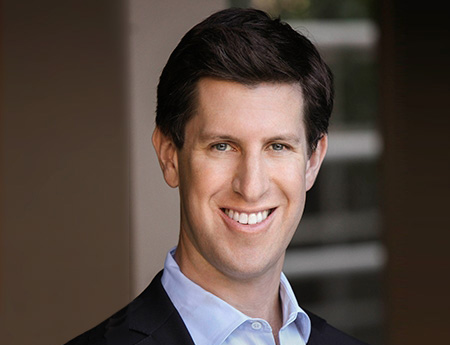
Since 2012, when Hulu launched Battleground, its first original scripted series, its originals strategy has focused primarily on budget-conscious comedies (Deadbeat, The Hotwives of Orlando) and U.K. acquisitions and coproductions (Moone Boy, The Wrong Mans). While that path helped it keep growing, the streaming service jointly owned by NBCUniversal, Fox and Disney has missed out on the acclaim garnered by rivals Netflix and Amazon for high-profile series such as House of Cards and Transparent.
Erwich, former head of Warner Horizon Television, was brought aboard in March as head of content and has since steered Hulu into buzzier waters. In September, the streaming service ordered nine-hour event series 11/22/63, a J.J. Abrams-produced adaptation of a Stephen King novel, from Warner Bros. Television. It has since greenlit two new pedigreed comedies—Casual, from executive producer Jason Reitman and Lionsgate Television, and Difficult People from Amy Poehler and Universal Cable Productions.
While those moves show Erwich is dedicated to adding slugging power to Hulu’s lineup, he hasn’t given up entirely on small ball. In August he renewed The Awesomes, the Seth Myers-produced animated comedy developed under former head of original series Charlotte Koh, for a third season. A mix of base hits and home runs could finally get people talking about Hulu’s originals. –Daniel Holloway
4. SAUL GOODMAN
MAIN CHARACTER, BETTER CALL SAUL
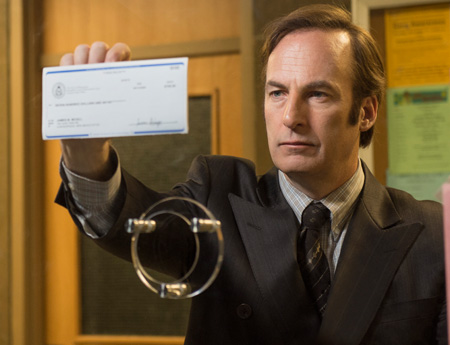
The Walking Dead is the most successful scripted program, ratings-wise, in the history of cable television. But even with a spinoff in the works and a successful companion talk show, it does not an entire programming lineup make. And it also falls short in terms of awards-season attention, an X factor for cable nets in the buzz business. If any network grasps the importance of awards it’s AMC, which proved that the sort of premium dramas on which HBO built its reputation could work on ad-supported television. It received 26 Primetime Emmy Award nominations in 2014. All but two of those were for either Mad Men or Breaking Bad—both of which will be off the air after the former ends its run in spring, 2015.
So it will be fascinating to see how Breaking Bad prequel Better Call Saul fares when it premieres in February. The show, focusing on Bob Odenkirk’s lawyer character Saul Goodman from the original series, will see Breaking Bad creator Vince Gilligan and writer Peter Gould serve as coshowrunners, so expectations will be high—which means so will the potential for disappointment. Unlike Mad Men, which drew accolades but never outstanding ratings, Breaking Bad by its later seasons delivered both.
If Better Call Saul can fill those size-13s, it could save AMC from criticism that it failed to develop a next generation of hits. Recent drama efforts Turn and Halt and Catch Fire have sparked little excitement, on the heels of 2013 flameouts Low Winter Sun and a second round of The Killing. The network is backpedaling from a foray into unscripted programming that saw it wander off-brand with shows about arena football and arm wrestling. If Saul joins the list of underachievers, the shadow of its predecessor could grow even longer. –DH
5. STEVE HASKER
GLOBAL PRESIDENT, NIELSEN
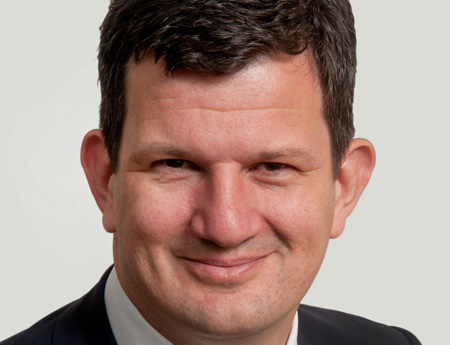
It can't always be easy to be the face of Nielsen. Nonetheless, Steve Hasker has not only made it through two eventful years in his current role, but has also managed to effect some positive change, at least internally, at the measurement giant.
It’s clear that Hasker brings a thoughtful approach. Before he arrived in 2009 as global products chief, he did a stint in McKinsey’s media practice, lectured often at Columbia (where he got his MBA and a Master’s in international relations) and was published in the Harvard Business Review. One pet topic: the effect of social media on consumer behavior.
The lanky Australian’s academic curiosity has been accompanied by a more open-door policy for a global workforce of 40,000 accustomed to a culture previously marked by bureaucracy and a reluctance to explain itself. In 2014, Nielsen has done its share of explaining, notably in a fall restatement of broadcast network ratings caused by a software glitch. The error contrasted starkly with lofty announcements about progress in its dogged pursuit of the brass ring: measuring video consumption across multiple platforms.
Hasker has thrown a few elbows along the way. During a press conference to address the ratings gaffe, he singled out Rentrak for derision, describing its methods as “not accredited.” The smaller rival’s top executives “never let the facts get in the way of a good press release,” he added.
The broadside highlights Hasker’s discomfort with the status quo. How that influences the path of Nielsen will have implications for the entire industry in 2015. –Dade Hayes
6. INTERCONNECTION AND PEERING
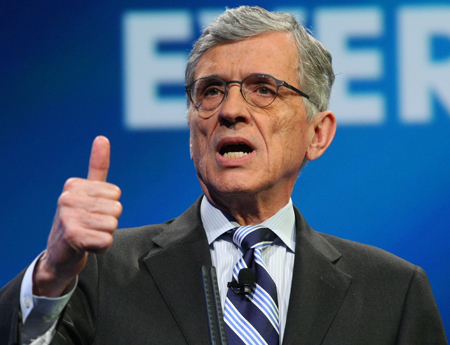
One of Washington's hot-button issues is how the FCC deals with interconnection and peering—the process by which networks and “edge providers” (defined as any entity providing digital content, e.g., Netlfix) connect with each other and exchange traffic. At issue is whether the review will occur in the context of new network neutrality rules or in a separate proceeding.
Netflix has been pushing to make interconnection between ISPs and edge providers part of the network neutrality debate, while FCC chairman Tom Wheeler has said it is a separate issue. Netflix argues that interconnections allow ISPs to move “discrimination” upstream from the customer-facing “last-mile” connections to the Internet “backbone.” ISPs counter that interconnection issues are business arrangements that helped build the Internet, and that edge providers want for free what they should have to pay for.
One network neutrality rule proposal would have the FCC apply Title II to the interconnection side, while using Sec. 706 authority to support rules dealing with consumer- facing connections. Wheeler has solicited information from ISPs about their interconnection regimes in advance of weighing into the issue, which he will almost certainly do.
Paid peering, meanwhile, is something of a misnomer. Peering was the free exchange of relatively equal amounts of traffic between networks. Paid peering is when the traffic is sufficiently unequal that ISPs charge for carrying and managing it, as Comcast and Time Warner Cable have done with Netflix given that it amounts to more than one-third of all Internet traffic at peak periods.
Wherever and however it’s addressed, the FCC will certainly include these means of connection in its larger effort to protect competition and access to content online. –John Eggerton
7. CHRISTINA MILLER
PRESIDENT/GM, CARTOON NETWORK, ADULT SWIM AND BOOMERANG
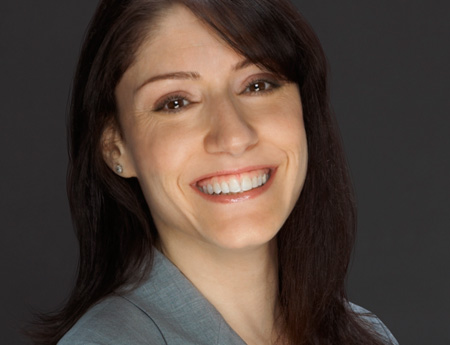
At a time when young viewers are abandoning traditional television, Christina Miller’s job is to find ways to generate more money from Turner Broadcasting’s Cartoon Network, Adult Swim and Boomerang.
Miller was named president and general manager for the youth-oriented channels in July. She had been general manager of NBA Digital and senior VP of Turner Sports strategy, marketing and programming.
The assignment is a priority for parent company Time Warner, which identified the kids business as a key source of potential earnings growth.
With Adult Swim, Turner has a network that consistently brings in large numbers of adults 18-34 on TV with edgy programs like the recently renewed Black Jesus. Time Warner also wants to reach those young viewers digitally and has talked about taking its original content over-the-top to connect with a new generation of broadband-only cord-nevers.
With Cartoon Network and Boomerang, Time Warner and Turner must step up their game to compete with the big kids in the kids business, Walt Disney Co. and Viacom’s Nickelodeon. The company has begun to implement plans to sell commercials on classic animation channel Boomerang and roll it out globally and add original content. But with Scooby- Doo in the lineup, those pesky kids won’t get in the way of growing the business. –JL
8. ONE MEDIA

As the Advanced Television Systems Committee works to develop a new broadcast television standard, One Media is noteworthy for the contributions it is making to that process and the potential disruption it might cause.
It was set up in May 2014 by Sinclair Broadcasting and Coherent Logix to test and develop next generation broadcast technologies for ATSC 3.0. Since then, they’ve brought in some very high profile tech talent, including Kevin Gage, former CTO of NAB, as EVP and CTO, and have been working on a number of promising technologies such as Scalable High Efficiency Video Coding.
Such innovation is important because ATSC 3.0 could revolutionize the industry by allowing broadcasters to offer a host of new services, ranging from 4K broadcasts to the ability to deliver robust signals to mobile devices or fast moving cars.
But Sinclair and One Media executives have also been vocal critics of the technologies ATSC seems to be embracing for the new standard. Such debate is a necessary part of the process of innovation but it could also complicate efforts by the industry to come together quickly around a new standard. Failure to do so could be very costly, making it impossible to implement ATSC 3.0 as part of the 2016 FCC spectrum auctions and subsequent repacking of spectrum. –GW
9. PROGRAMMATIC ADVERTISING

Programmatic advertising is the television business’ future, but when will it be the present? Buying with programmatic tools goes hand-in-hand with audience buying and big data. TV executives like the idea that they can sell valuable slices of their viewership. Instead of the traditional demographic of men 18-49 defined by Nielsen, it could mean finding high-income men who have recently bought a house for an insurance company client. Targeting like that could command a premium price, especially if networks are able to take the lead in filtering the data.
At a time when money is shifting to digital— which already claims that level of targeting— many TV execs are eager to get into the game.
But there are concerns about the other side of the programmatic coin—a lack of control of inventory and pricing as the job of matching commercial inventory to targets become more automated and sales are conducted by auction. And most of the TV world isn’t set up to buy commercials and slap them into specific programs and pods at the last minute.
NBCUniversal, Disney’s ABC and ESPN, Tribune Media and Cox Media all have been testing programmatic programs. And after a depressing upfront and a tepid scatter market, the pressure to sell via programmatic is likely to grow. –JL
10. DAVID RHODES
PRESIDENT, CBS NEWS

Like the rest of the TV industry, the news business is rapidly changing. Nowhere is that more apparent than with the executives who call the shots.
When the calendar flips to 2015, there will be yet another change atop a major network news division, as CBS News president David Rhodes assumes sole leadership of the division, with Jeff Fager returning to his 60 Minutes roots.
With Rhodes’ ascension and ABC News president James Goldston heading into his first full year at the helm, that leaves NBC News president Deborah Turness, who took the reins at the Peacock network in early 2013, as the longest-tenured chief executive among the broadcasters.
Rhodes became the youngest network news president when he took the job in 2011, and Fager has been grooming him to eventually succeed him ever since. Rhodes was front and center of CBS’ launch of its 24/7 digital streaming network CBSN.
With more players in the news industry than ever before—and young upstarts such as Fusion and Vice News emphasizing multiplatform delivery—Rhodes will have to blend new-age viewing options with CBS’ reputation for more serious TV journalism.
With NBC and ABC seeing ratings success by going with lighter news fare, Rhodes faces an interesting challenge in trying to prove that the network that had Walter Cronkite behind the anchor desk can compete by going the other way. –Tim Baysinger
11. MICHELE ROBERTS
EXECUTIVE DIRECTOR, NBPA

It is a forgone conclusion that the National Basketball Players Association will opt out of the current collective bargaining agreement in 2017, just a year after the league’s hefty $24 billion TV deal kicks in. During his first year as commissioner, Adam Silver has largely been praised, but he could soon be faced with something that plagued his predecessor David Stern: another lengthy work stoppage.
And in new NBPA executive director Michele Roberts—the first woman to lead a major sports union—Silver faces a more-than-worthy negotiator across the table. Under former executive director Billy Hunter, the NBPA was a fractured mess; the hope is that Roberts, known as one of the best trial lawyers in the country, can change that.
Roberts has done nothing but make headlines since she took the job, taking aim at several aspects of the NBA system: the age limit (Silver has said he wants to raise it to 20 years old), max contracts and the entire concept of the salary cap, which has been in place since 1984.
It appears Roberts is digging in her heels and preparing for a nasty fight, one that could legitimately threaten the entire 2017-18 season.
The true effect of Roberts won’t be felt for a couple of years, but her rhetorical exchanges with Silver should dominate the conversation throughout the year. –TB
12. KATIE JACOBS STANTON
VP OF GLOBAL MEDIA, TWITTER

As Twitter struggles to prove it can really live up to all the hype surrounding its IPO that valued the money-losing company at $31 billion in 2013, Stanton will be a key figure for the company’s future prospects and for the alliances that Twitter is trying to expand with the TV industry.
Stanton first joined Twitter in July 2010, with a resume that included stints at Yahoo, Google, the Obama Administration as director of citizen participation and the U.S. State Department. As VP of international market development, she managed to boost Twitter’s international profile and in June 2014 was promoted to her current role running global media alliances.
That promotion came in the wake of a management shakeup designed to address investor concerns about the company’s progress in boosting users and revenue.
To address those concerns, Stanton is working to build even stronger ties with media companies. Alliances with producers of high-profile TV content could give Twitter a bigger piece of the social media ad spend, which Magna Global predicts will hit $9.4 billion in 2015 and is currently dominated by Facebook, and help boost sluggish user growth.
But to achieve those goals, Stanton will also have to fend off competition from Facebook, which has been stepping up work with networks and has stepped up its efforts to supply data that documents the value of social media campaigns. –GW
13. SEN. JOHN THUNE

There's a new sheriff in town. With the Republican takeover of the Senate and its powerful committee chairmanships, Sen. John Thune (R-S.D.) is in line to head up the Commerce Committee when the new Congress takes over in January. He is no fan of strong net neutrality regs, but has backed eviscerating retransmission consent, making cable operators middlemen in a transaction between broadcasters and viewers.
While outgoing chairman Jay Rockefeller (D-W.Va.) was a fan of a Title II-plus-forbearance approach to new network neutrality rules, Thune has sounded ready to rumble over a Title II approach. He has said that it would stifle innovation, perpetuate a corrosive policy debate and invite legal uncertainty. He branded the President’s support of Title II “stale” thinking.
Look for the new Senate Republican majority in the Commerce Committee to ramp up oversight of the FCC under Thune, and perhaps even try to take steps to thwart new network neutrality rules.
Where Thune and Rockefeller agreed was on the Local Choice provision they wanted to include in a recently passed satellite bill. The amendment was eventually withdrawn, but Thune’s interest in a retrans remake remains. For Thune, free market means cable operators free of having to carry television stations that elect retrans on the basic (must-buy) tier. –JE
14. VICE MEDIA

Is there a hotter media property around? Vice has come a long way in 20 years, from a freebie Montreal magazine to a young male-grabbing, zeitgeist-harnessing, YouTube-dominating mega brand so sought after that it actually got Rupert Murdoch to schlep out to Brooklyn for a meeting.
Earlier this month, Vice and 20th Century Fox launched Vice Films, giving edgy, emerging directors a bigger stage and Vice a new platform. 20th Century owns a small stake in Vice Media, and other giants are eager to tap its secret sauce, including Disney and Time Warner, which also tried to buy in. A+E Networks coughed up $250 million for a 10% stake that set Vice’s valuation at a stunning $2.5 billion on an estimated $500 million in revenue, the bulk of it from client-oriented video production and advertising.
Vice’s eponymous newsmag on HBO kicks off Season 3 in 2015. But CEO Shane Smith wants more than a TV series—he wants his own network. (Talks with Time Warner about Vice controlling HLN, which Smith later called a “distressed asset,” did not culminate in a deal.) If Vice and Dennis Rodman can steer clear of North Korea, 2015 may be the year he gets one. –Michael Malone
15. LARRY WILMORE
WRITER/PRODUCER, HOST OF THE NIGHTLY SHOW WITH LARRY WILMORE

Chances are you’re familiar with the work of Larry Wilmore. He created The Bernie Mac Show, wrote for In Living Color, produced the first three seasons of The Office (even making a guest appearance as diversity consultant Mr. Brown in the popular “Diversity Day” episode) and served as showrunner for the first half of Black-ish’s current debut season. Since 2006, he has appeared regularly as The Daily Show’s “Senior Black Correspondent.” But in 2015, Wilmore is likely to become much more of a household name.
With the Jan. 19 premiere of his new Comedy Central series, The Nightly Show with Larry Wilmore, the 53-year-old comic will be in the both enviable and daunting position of following his predecessors Jon Stewart and Stephen Colbert. The Nightly Show will air at 11:30 p.m., right after The Daily Show and in the old time slot of The Colbert Report.
Matching the immediate cultural and ratings success of The Report and HBO’s Last Week Tonight with John Oliver is perhaps an unfair expectation, but that is certainly the hope. Wilmore undeniably has the comedic chops and pedigree to thrive in the (mostly white) late-night comedy landscape. Given the intensity of national conversation around Ferguson, Mo., immigration policy and a range of related topics, his new Nightly soapbox could hardly have come along at a better time. –Jonathan Kuperberg
